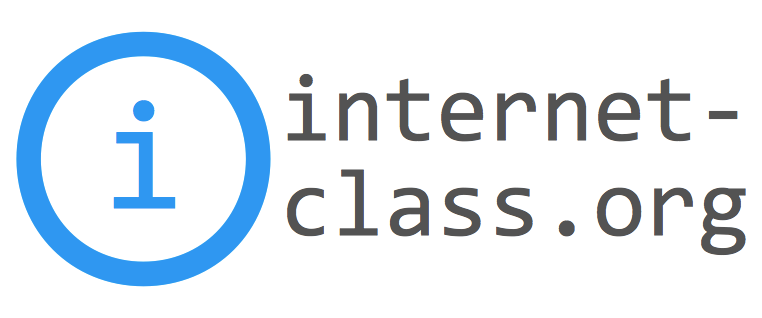CSE 199: How the Internet Works
Enrollment: 440
Retrospective
We’re preparing a series of blog posts about the challenge of flipping a large course like this one:
-
Part 2: Activities (Planned)
-
Part 3: Online Videos (Planned)
Greg Bunyea and Heeba Kariapper have also been mining the evaluations to learn the lessons of our initial experience and improve the course in future iterations. They prepared this poster summarizing some of our findings:

Evaluations
Enrollment |
440 |
Response Rate (%) |
95 |
Instructor Rating (out of 5) |
3.53 |
Course Rating (out of 5) |
3.08 |
Full quantitative and qualitative evaluation results are here. Given that this was the first time that the course was offered and the video content, activities, approach, and staff were all new, we were fairly satisfied with these results. The course will definitely improve the next time it is offered, thanks in part to the excellent feedback provided by this year’s students.
Summary
The internet is changing every aspect of our lives, including how we communicate, learn, navigate, organize, work, play, and love. The internet also represents a crowning achievement of computing: a single system uniting hardware and software, theory and implementation, standards and innovation, engineering and science, protests that topple governments and stupid cat videos. This course provides an overview of how the internet works by describing everything required to answer a single search query. Along with its technologies, we will delve into the internet’s past and future, policy challenges, and societal implications. The course is targeted at a general audience, but because the internet reflects contributions from many areas of computer science and computer engineering, it also provides a good overview for potential majors. Familiarity with the web and access to a personal computer are assumed, but no technical background is required.
Structure and Approach
The course is broken into 15 concept units, with one scheduled per week. Instead of being delivered in lecture, content is all delivered online through a content library containing a large number of short videos totaling about one hour of required video content per week for students to review outside of class. Half of that will be assigned for the first meeting (Monday) and half for the second meeting (Wednesday). Individual videos will be limited to 5 m in length, and so the 60 m of per-week video will be spread across at least 12 short videos.
Initially all of the videos will be recorded by the instructor, but over time
those initial explanations will be augmented with contributions from faculty,
students and alumni.
Engaging faculty in the content helps provide students with an introduction
to the Computer Science and Engineering department as well as allow experts
to speak on topics they know best.
Engaging students in the process through an assignment helps ensure that the
content library continues to grow and may provide better or alternative
explanations.
Engaging alumni in the process will help connect students with both local and
remote alums working in relevant areas.
Videos will also be included from external sources as appropriate.
Classroom time is reused for participation-graded group activities that
reinforce that week’s material (Monday), for Q&A based on questions about the
video content added and voted on by students online (Wednesday), and to allow
students to complete graded weekly homework assignments (Friday recitation).
Please see the internet-class project page
for more details and motivation for this new approach.
Videos
Course content is being prerecorded in five-minute videos made available to students on YouTube.
- Andrew Hughes
- Carl Nuessle
- Greg Bunyea
- Jennifer Winikus
- Jesse Hartloff
- Matthew Hertz
- Aishani Bhalla
- Angus Lam
- Brijesh Rakholia (Microsoft)
- Dan Starner
- David Dobmeier
- Evan Walley
- Grant Wrazen
- Harshita Girase
- Heeba Kariapper
- Ian Ngumi
- Isabelle Caneda
- Junjie Chen
- Kyle Schoener
- Lakshmi Prasanna Ethiraj
- Lawreen Latif
- Liam Gensel
- Michael Drewitt
- Mohit Bhatia
- Parth Shah
- Patrick Jones
- Rachel Roberts
- Richard Hanulewicz
- Valencia Kaplinsky
- Wesley Csendom
